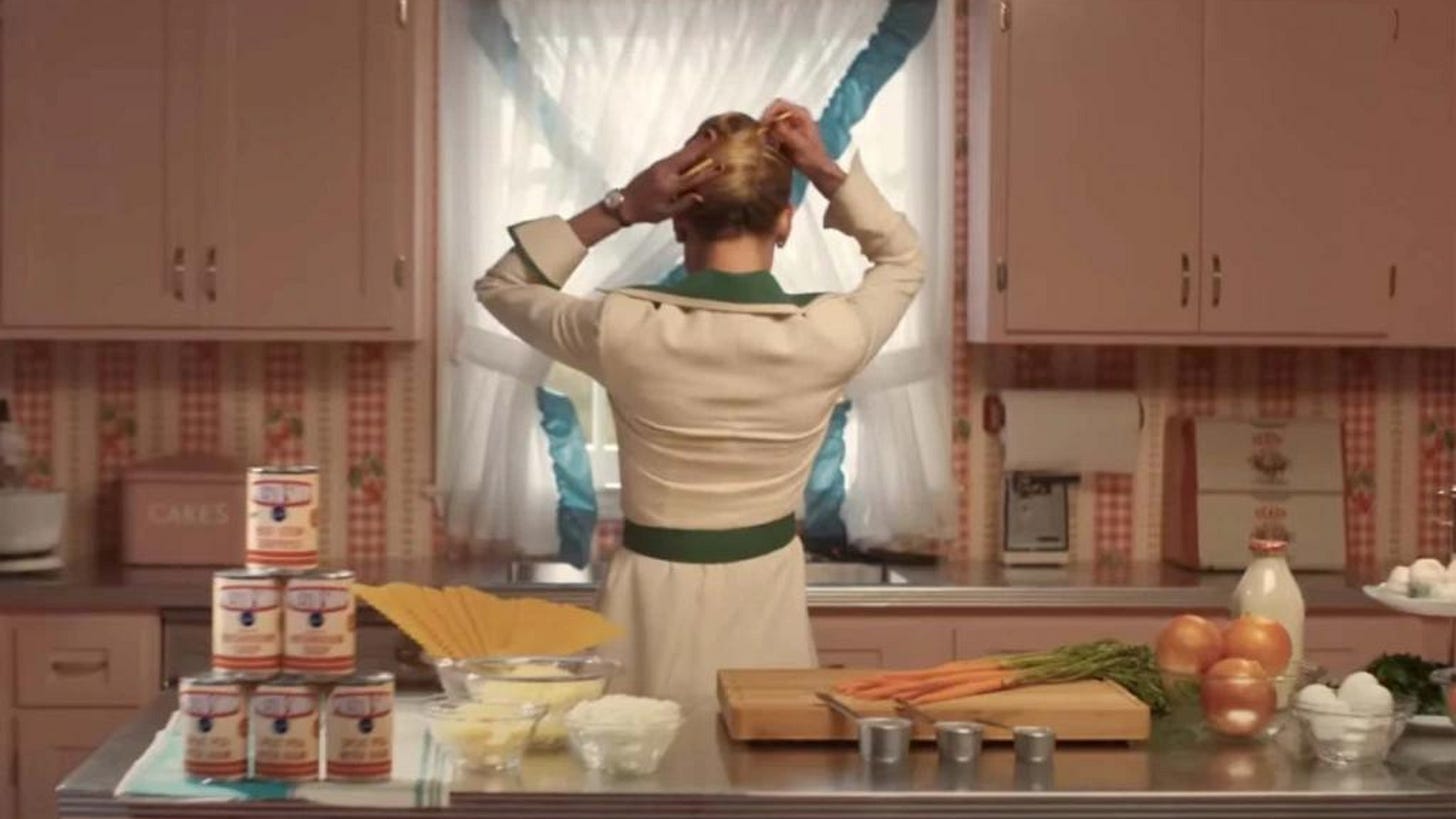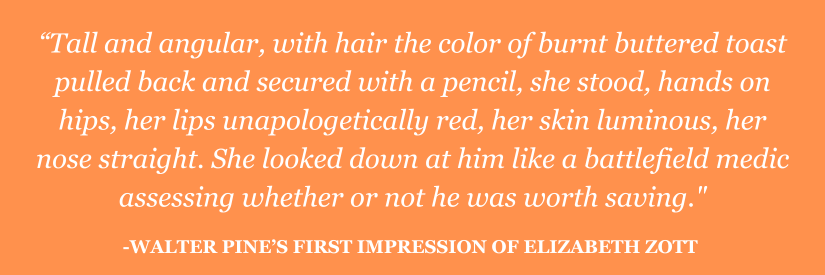Lessons in character. Did I say character? My bad, I meant chemistry.
Lessons in Chemistry is the debut novel of former copywriter Bonnie Garmus. It was published in March 2022 and is already a multi-million copy bestseller, #1 Sunday Times and #1 New York Times Bestseller. Bonnie Garmus also won Author of the Year at the 2023 Britsh Book Awards, and the book is soon to be a major Apple TV+ series starring Brie Larson. Talk about overnight success.
Lessons in Chemistry is also the focal point of my very first newsletter, where I will attempt to answer one simple question: Why was this book published?
What better way to solve this literary mystery, than to consult my box of editing tools and put this novel under the microscope?
Thanks for being one of the first subscribers to Nat’s Notes. Here goes nothing!
All Elizabeth Zott has ever wanted is to work as a chemist and be recognised for her contributions to the scientific community. The problem is, it’s 1961 and the second wave feminism movement hasn’t arrived in the Southern Californian town of Commons. Lessons in Chemistry is a story about lots of things, grief, intellectual dogs (or dog) and sexism, but mainly it’s the story of a trailblazing woman who never gave up on her dream.
I’ve chosen to unpack this particular book because, amongst other things, it is a modern masterclass in characterisation, aka the creative construction of a fictional character.
The reason Garmus is so good at this is probably (and I’m only speculating here) because she is a copywriter and if this book is anything to go on, she’s a very good one. You’ll notice there aren’t any flowery descriptions about the weather or superfluous adjectives jammed into long sentences. In fact, I feel pretty comfortable saying there are hardly any words in this book that don’t serve a clear purpose.
Take the main character, Elizabeth Zott, for example. Within the first four pages, Garmus has already told us everything we need to understand this character. I’ve broken it down into five points so you can see what I mean.
Elizabeth Zott writes little notes like “play sports at recess but do not automatically let the boys win” and puts them into her daughter’s lunchbox. In other words, she’s a feminist and (way) ahead of her time. (pg.1)
Her daughter Madeline comments that “her mother had never fit in and look what happened to her” telling us that Zott is an outsider, not only at work but in life. (pg.2)
We are told that “The thirty-year-old mother of Madeline Zott rose before dawn every morning and felt certain of one thing: her life was over.” So, now we know that she’s thirty and depressed. (pg.1)
Elizabeth is always thinking about chemistry, even when she’s preparing her daughter’s lunch: “According to her calculations, Madeline’s daily intake was exactly what her daughter required for optimal development … ” (pg.4)
Finally, this depressed, thirty-year-old scientist, also somehow managed to land a job on a TV cooking show called “Supper at Six”, and according to her daughter she is “its indisputable star.” (pg.3)
And so, with a few simple, effective sentences the stage has been set and the story is ready to begin.
As you read further, you’ll see that Garmus sets up each of her characters this way. Giving the reader all the essential facts from the get-go. There is often a tendency for writers to do the opposite, to keep the reader guessing and drip-feed juicy character details throughout the course of the novel. While this is sometimes necessary to serve the plot, what Garmus understands is that in order to craft authentic characters you need to give your reader the facts.
Think about it like you’re playing dress up, you don’t need to put on their jacket yet, it’s not going to rain until chapter ten. But you definitely need to put on their glasses otherwise your character and your reader are going in blind.
CRAFTING SUB-CHARACTERS
As Elizabeth Zott is the protagonist (main character), Garmus gives us a lot to go on. You’re not going to have enough space to do this for every character, so when it comes to sub-characters or those random extras who stumble in for one scene, it’s all about finding the one thing we have to know to understand that character.
Garmus does this brilliantly with Phil Lebensmal, the evil Director of KCTV, the local television studio that produces Supper At Six. By chapter 30 we already know that Lebensmal is a nasty boss with sexist ideas about what makes good TV, but we’ve never actually met him on the page. Garmus does two things to set him up.
First, one of Elizabeth’s female colleagues warns her that, Walter Pine, the producer of Supper at Six, “ … never lets any of us [women] meet with Lebensmal alone.” (pg.270), which tells us this man isn’t to be trusted and is potentially dangerous.
When Elizabeth ignores this warning and goes to meet him anyways, Garmus then gives us the character’s first impression of Lebensmal:
“Lebensmal was sitting behind an enormous desk covered with stacks of papers and half-eaten food, four huge televisions broadcasting loud reruns in a ghostly black and white, the air stale with cigarette smoke … ” (pg.270)
Garmus is describing a specific character here. However, when put you add in the fact that he’s not trusted to be alone with women, she’s now describing every gross, misogynistic male CEO that’s ever existed. In other words, our minds immediately go to the Harvey Weinsteins of the world. And so, in those two sentences, we know exactly who this man is and what he’s capable of.
POINT OF VIEW
Now that we can all agree Lessons in Chemistry is full of beautifully crafted, authentic characters, I want to talk about the writing style. You may have noticed that Garmus takes quite an unusual approach to character perspective.

She uses the third-person omniscient perspective, allowing her to jump into anyone's mind at will, as opposed to a third-person limited perspective where she would be confined to the thoughts of one character per scene. This is called ‘head-hopping’, and it makes editors very stressed. There are a number of reasons for this, and they include but are not limited to:
your reader has to keep track of whose thoughts and emotions are being experienced;
suspense is diminished because the reader knows what everyone is thinking;
it creates a less immersive experience because the reader is not just sticking with one character;
it can constantly remind the reader of the writer’s presence;
and, if the reader doesn’t know where they are in the novel for even a few seconds, chaos ensues.
These associated risks mean that this kind of narration is rare. However, if you can do it well you’re classed as one of the greats. Garmus does it with such ease in Lessons in Chemistry it's hard to believe this is her debut novel.
The trick with head-hopping (for anyone that’s bold enough to try it), is to establish the perspective within the first few paragraphs. Let’s take a look at a couple of quotes from the first few paragraphs of Lessons in Chemistry (pg.1):
“... the thirty-year-old mother of Madeline Zott rose before dawn every morning and felt certain of just one thing: her life was over.
Despite that certainty, she made her way to the lab to pack her daughter’s lunch.
Most young children can’t read, and if they can, it’s mostly words like ‘dog’ and ‘go.’ But Madeline has been reading since age three, and now, at age five, was already through most of Dickens.”
These sentences show us that the narrator is completely in control of the scene. She holds all the information about these characters. So instead of being directly immersed in their minds, we find ourselves within the narrator’s perspective as she takes us on an adventure through their thoughts and emotions.
SO, WHY WAS THIS BOOK PUBLISHED?
What made a literary agent, editor, or publisher pick it out from an overflowing stack of submissions and know it was a winner? My money is on the fascinating characters who make this witty, charming novel a blockbuster.
READ ALONG WITH ME
If you enjoyed deep diving into the storytelling of Lessons in Chemistry, why not read along with me? The next book I’ll be covering is Babel by R.F. Kuang.
See you in two weeks!
Nat x
P.S. I’m open to your recommendations! If you have a suggestion for a book you’d like me to do an editorial review on, you can comment on the official Nat’s Notes TBR List.




